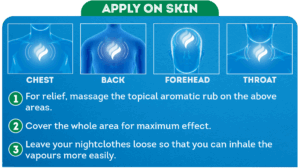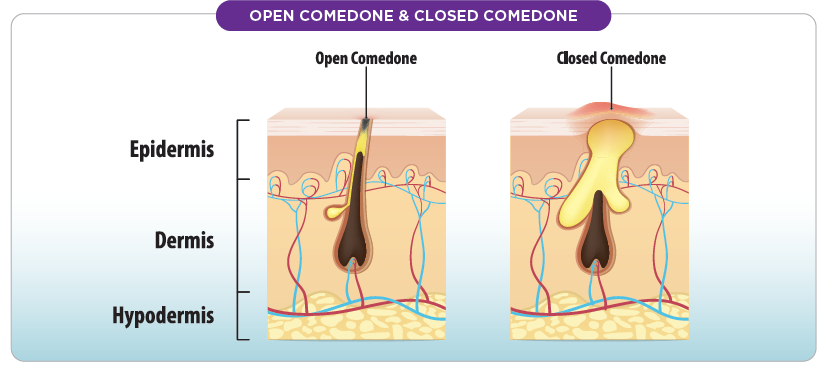Most people will experience the common cold at some point — in fact, adults typically endure 2 to 4 colds a year, while children may have up to 6 to 8 episodes annually.¹
When a cold strikes, it doesn’t just leave you sniffling and coughing during the day.
Between nasal congestion, sore throat, persistent coughing, and headaches, even the simplest act of falling asleep can become a challenge.2
Hence, while the illness is generally mild and self-limiting, its symptoms can significantly disrupt sleep, which in turn can affect your daily function and overall quality of life.2
HOW COLD SYMPTOMS IMPACT SLEEP
The unpleasant combination of nasal stuffiness and nocturnal coughing is notorious for breaking up a night’s rest.
Research shows that symptoms of the common cold can:
- Reduce the percentage of time you spend asleep while in bed (sleep efficiency)1
- Lead to mild, short-term insomnia.²
A FAMILIAR REMEDY THAT’S STILL WORTH USING
When faced with multiple bothersome symptoms, people often reach for a mix of over-the-counter options to get relief.
One classic solution that has stood the test of time is the topical aromatic rub, a medicated ointment applied to the chest, throat, and back.
What Is in a Topical Aromatic Rub That Makes It Effective?
Topical aromatic rubs usually contain volatile aromatic compounds like menthol, camphor, and eucalyptus oil.1
These active ingredients produce gentle effects can help calm coughs and ease breathing discomfort, especially at night when cold symptoms tend to be worse.1
Menthol
- A natural compound extracted from peppermint or other mint oils.
- When applied to the skin or inhaled, it likely creates a cooling sensation and nasal decongestion.1
- It can also alter the way your body senses and responds to the urge to cough and may help you cough less often.1
Eucalyptus oil
- Similar to menthol, it likely helps to create a cooling sensation and helps to decongest the nostrils, which can aid in easier breathing.1
- It may also help reduce the number of times you have to cough during the night.1
Camphor
- Derived from the wood of the camphor tree.
- Together with menthol and eucalyptus oil, camphor helps to reduce cough frequency.1
Please Take Note
|
HOW TOPICAL AROMATIC RUB WORKS
Method 1: Apply on Skin

- Apply on the chest and throat for easing of cough and nasal congestion.
- Apply on the back for children 2-years-old and older.
Method 2: Steam Inhalation for Deeper Relied

- Children should be closely supervised to avoid scalding.
WHAT THE SCIENCE SAYS
Evidence from clinical studies supports the use of topical aromatic rubs for symptom relief and improved sleep during the common cold.
Evidence 1
One study, conducted by researchers in the US and UK, found that participants who used a topical aromatic rub:
- Slept better compared to those who didn’t use the rub.1
- Woke up feeling more refreshed and better rested.1
- Reported sufficient sleep despite having a cold.1
- Found it easier to get out of bed in the morning.1
These findings suggest that the topical aromatic rub provides symptom-relieving properties that can lead to improvements in sleep quality.
Evidence 2
A more recent European study reported that 80% of their respondents reported better relief and sleep when they used a topical aromatic rub alongside cold medicines.2
The result highlights the value of combining topical aromatic rubs with other standard cold management approaches for enhanced symptom control and sleep support.2
THE TAKEAWAY
A topical aromatic rub remains a practical, accessible, and scientifically supported tool in managing cold symptoms, particularly at night when congestion and coughing tend to interfere with sleep.
Its combination of menthol, camphor, and eucalyptus oil offers multi-symptom relief suitable choice for both adults and children over 2 years old.
Best of all, it’s affordable, easy to find over the counter, and simple to use as part of your evening cold care routine.
For a more restful night during a cold, consider adding a topical aromatic rub to your evening routine alongside other cold remedies. Remember to consult a healthcare provider if symptoms persist or worsen.
This article is brought to you by P&G Health

References:
- Santhi, N., Ramsey, D., Phillipson, G., Hull, D., Revell, V. L., & Dijk, D. (2017). Open journal of respiratory diseases, 7(02), 83–101. https://doi.org/10.4236/ojrd.2017.72009
- Whiteford, D., Rios, J., Hengehold, D., & Aspley, S. (2023). Open journal of respiratory diseases, 13(02), 9–27. https://doi.org/10.4236/ojrd.2023.132002








